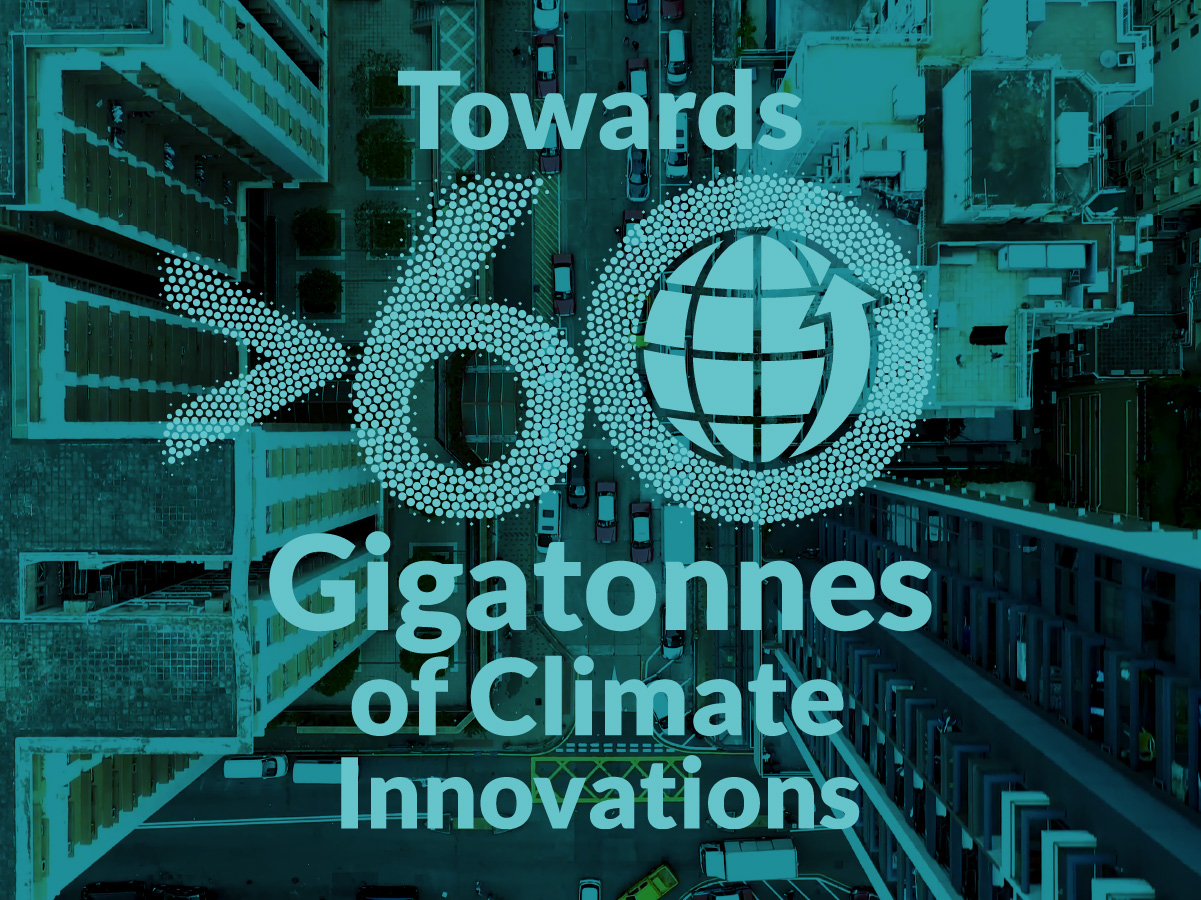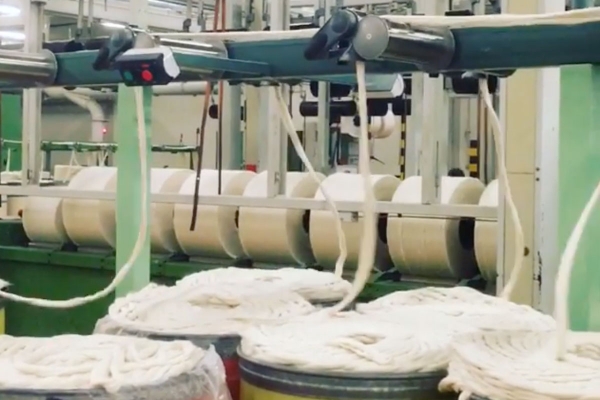Nominated innovations
1000 innovative clean energy solutions and > 150 framework enablers with the potential to deliver more than twelve gigatonnes of avoided emissions by 2030
These assessments are based on a basic avoided emission assessment. The overall concept of avoided emissions is that a solution (product or service) enables the same function to be performed with significantly less GHG emissions. The method of measuring avoided emissions, is to compare a baseline scenario without the enabling solution, with a scenario using the enabling solution; whereby the baseline represents the ‘business as usual’ (BAU) scenario.
These assessments are based on the framework document: The Avoided Emissions Framework (AEF) from September 2020

Mixed waste plastics to fuel oil through pyrolysis
The solution aims to recycle plastics into an energy source. The continuous production of fuel oil is achieved using a variety of different plastics. This solves the problem of plastics recycling as well as offsetting the need for additional fuel oil.
India

Indian Institute of Technology Bombay
Mixed waste plastics to fuel oil through pyrolysis
The solution aims to recycle plastics into an energy source. The continuous production of fuel oil is achieved using a variety of different plastics. This solves the problem of plastics recycling as well as offsetting the need for additional fuel oil.
Currently unavailable

Low cost high-performance solar PV microinverter
A power converter for solar panels that increases the solar energy utilization of solar panel.
India

Indian Institute of Technology Bombay
Low cost high-performance solar PV microinverter
A power converter for solar panels that increases the solar energy utilization of solar panel.
Currently unavailable

Aerogel-based solar autoclave for medical sterilization
An alternative sterilization method for rural areas where traditionally used equpiment is not available. It is a solar-operated autoclave which produces pressurized steam.
India

Indian Institute of Technology Bombay
Aerogel-based solar autoclave for medical sterilization
An alternative sterilization method for rural areas where traditionally used equpiment is not available. It is a solar-operated autoclave which produces pressurized steam.
Currently unavailable

Power and bio-fertilizer from paddy straw residue
Avoidance of in-field burning of agricultural biomass residue by using large scale biogas production from paddy straw to generate 1.0 MW power. Can also be used for production of bio-fertilizer.
India

Indian Institute of Technology Delhi, Hauz Khas, New Delhi - 110016, India
Power and bio-fertilizer from paddy straw residue
Avoidance of in-field burning of agricultural biomass residue by using large scale biogas production from paddy straw to generate 1.0 MW power. Can also be used for production of bio-fertilizer.
Currently unavailable

A multi-functional drag reduction coating for cars
The innovation is a polymeric coating which is placed on car roofs in order to reduce fuel consumption. It also reflects infrared light, keeping the car cool and reducing the need for an AC. The surface will also allow strong adhesion of particles, which helps with the removal of dust from polluted areas.
India

Indian Institute of Technology Kanpur
A multi-functional drag reduction coating for cars
The innovation is a polymeric coating which is placed on car roofs in order to reduce fuel consumption. It also reflects infrared light, keeping the car cool and reducing the need for an AC. The surface will also allow strong adhesion of particles, which helps with the removal of dust from polluted areas.
Currently unavailable

Anode enabling fast charging of li-ion batteries
A fast-charging battery for the transport sector.
India

Indian Institute of Technology Roorkee
Anode enabling fast charging of li-ion batteries
A fast-charging battery for the transport sector.
Currently unavailable

Crop based construction blocks
Industrial Nature wrote: The company has researched and developed three types of insulating crop-based construction blocks. These are unique in that they both insulate, store heat, provide structure and passively regulate temperature and humidity - all with local and natural materials. They outperform conventional insulation materials and have a better than zero carbon footprint due to the carbon sequestration in the crop-based aggregate. They. Are also better than zero waste because they can be reprocessed or recycled at end of life. They are designed to positively disrupt the global mainstream building sector... Source: EIT Climate KIC's ClimateLaunchPad
United Kingdom

Industrial Nature
Crop based construction blocks
Industrial Nature wrote: The company has researched and developed three types of insulating crop-based construction blocks. These are unique in that they both insulate, store heat, provide structure and passively regulate temperature and humidity - all with local and natural materials. They outperform conventional insulation materials and have a better than zero carbon footprint due to the carbon sequestration in the crop-based aggregate. They. Are also better than zero waste because they can be reprocessed or recycled at end of life. They are designed to positively disrupt the global mainstream building sector... Source: EIT Climate KIC's ClimateLaunchPad
Currently unavailable

Recycling textile waste into new fibers
As much as 73 % of clothing is landfilled or burnt. Infinited Fiber Company has a goal to revolutionize the fashion world by changing the waste in clothing manufacturing. The company has developed a process technology that can turn textile and paper waste into new fibers for the textile industry. They claim this can be done infinitely without decreasing the quality of the fiber. The technology rids the value chain of carbon disulfide – the most challenging, hazardous, and biologically harmful chemical in the fashion industry. Furthermore, the innovation is also flexible and can be integrated into existing pulp, dissolving pulp and viscose fiber plants.
Finland
≈10

Infinited Fiber Company
Recycling textile waste into new fibers
As much as 73 % of clothing is landfilled or burnt. Infinited Fiber Company has a goal to revolutionize the fashion world by changing the waste in clothing manufacturing. The company has developed a process technology that can turn textile and paper waste into new fibers for the textile industry. They claim this can be done infinitely without decreasing the quality of the fiber. The technology rids the value chain of carbon disulfide – the most challenging, hazardous, and biologically harmful chemical in the fashion industry. Furthermore, the innovation is also flexible and can be integrated into existing pulp, dissolving pulp and viscose fiber plants.
≈10Mt CO2e/year

Infinitum
Infinitum wrote: Infinitum offers a platform for renewable energy selling that enables buying cheaper energy peer-to-peer.. Source: EIT Climate KIC's ClimateLaunchPad
Lithuania

Infinitum
Infinitum
Infinitum wrote: Infinitum offers a platform for renewable energy selling that enables buying cheaper energy peer-to-peer.. Source: EIT Climate KIC's ClimateLaunchPad
Currently unavailable

Infinity
Infinity wrote: We propose automated bins based on nir spectroscopy that sort textiles by fibre for recycling (skipping the waste/incineration emissions): natural fiber can be used for producing new clothes (skipping the growing and harvesting emissions). Synthetics can be routed to pet to products like bottles (skipping the petroleum emissions). The infinity bin is fully automated. Clothing pieces are inserted one by one on the belt which starts up (similar to automated book drops in some libraries). The fibre sensor (fibersort) works by measuring how much light from an infrared light source is absorbed by each textile. The reflected light creates a characteristic spectrum of each fibre type or blend combination... Source: EIT Climate KIC's Climathon
Switzerland

Infinity
Infinity
Infinity wrote: We propose automated bins based on nir spectroscopy that sort textiles by fibre for recycling (skipping the waste/incineration emissions): natural fiber can be used for producing new clothes (skipping the growing and harvesting emissions). Synthetics can be routed to pet to products like bottles (skipping the petroleum emissions). The infinity bin is fully automated. Clothing pieces are inserted one by one on the belt which starts up (similar to automated book drops in some libraries). The fibre sensor (fibersort) works by measuring how much light from an infrared light source is absorbed by each textile. The reflected light creates a characteristic spectrum of each fibre type or blend combination... Source: EIT Climate KIC's Climathon
Currently unavailable